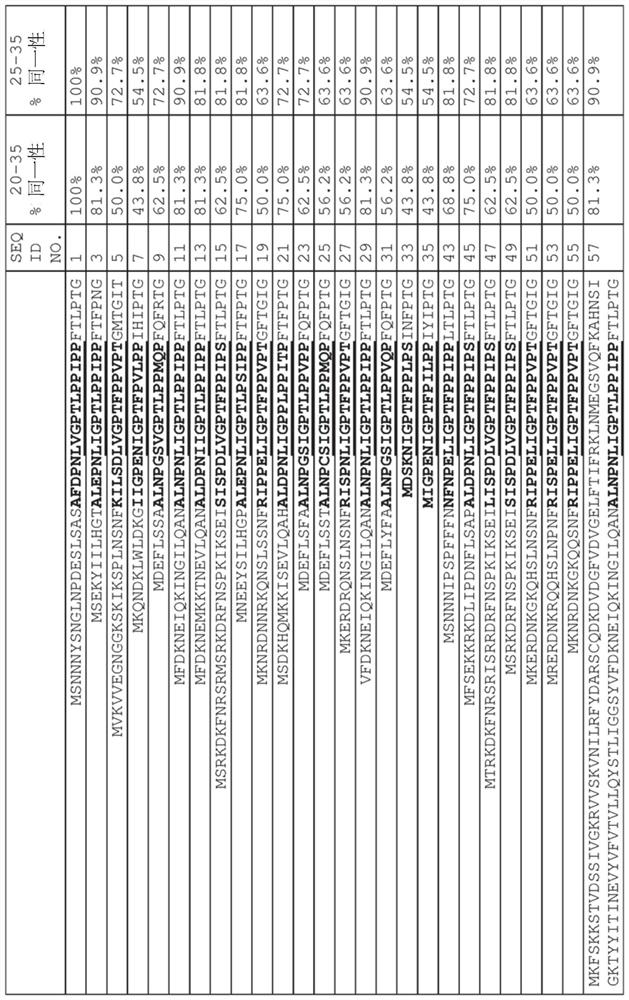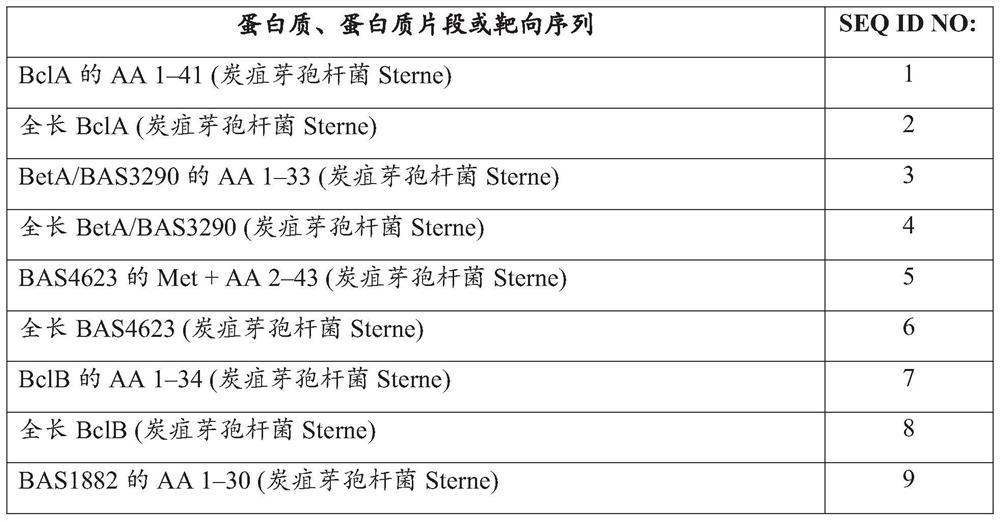Fusion proteins, recombinant bacteria, and exosporium fragments for plant health
A fusion protein and protein fragment technology, applied in the field of fusion protein, can solve problems such as low survival rate and protein degradation
- Summary
- Abstract
- Description
- Claims
- Application Information
AI Technical Summary
Problems solved by technology
Method used
Image
Examples
Embodiment 1
[0510]Example 1. Construction of Bacillus cereus family members displaying endopolygalacturonase
[0511] To construct a member of the Bacillus cereus family displaying the endopolygalacturonase of SEQ ID NO: 227, by combining the pUC57 plasmid (containing the ampicillin resistance cassette and the ColE1 origin of replication) with pBC16 from Bacillus cereus -1 plasmid (containing tetracycline resistance gene, repU replication gene and oriU origin of replication) was fused to generate pSUPER plasmid. Note that SEQ ID NO: 227 is identical to SEQ ID NO: 210 except that SEQ ID NO: 227 contains an extra cysteine at its carboxy terminus. This 5.8 kb plasmid is replicable in both E. coli and Bacillus spp. and can be selected by conferring resistance to β-lactam antibiotics in E. coli and resistance to tetracycline in Bacillus spp. The base pSUPER plasmid was modified by inserting a PCR-generated fragment incorporating the BclA promoter (SEQ ID NO: 149), the start codon, amino aci...
Embodiment 2
[0514] Example 2. Canadian rape (canola) plant growth promotion research
[0515] Clear trays (5" x 5" x 2 1 / 2") were covered with a 5" x 5" VersaPak (Anchor Paper Company, St. Paul, MN) cushioning material. In each tray, place fifty canola seeds and treated with 50 mL of diluted whole broth so that each tray received at least 2 x 10 7 CFU of BT013A wild type strain or recombinant strain displaying endopolygalacturonase load ("EPG strain") as described in Example 1. Untreated control trays received 50 mL sterile water. One hundred seeds were tested for each strain, and untreated controls were placed in two trays. Place the trays in random order on the setting 450 μmol m -2 sec -1 Photosynthetic Photon Flux Density (PPFD), 14 hr light (28°C) / 10 hr dark (18°C) growth chamber rack for 21 days with daily rotation to minimize location effects. Watering was carried out daily from day 7 until the end of the experiment. No fertilizers or growth improvers are used.
[0516] Obse...
Embodiment 3
[0517] Example 3. Corn and soybean water stress research
[0518] Clear trays (8" x 8" x 3") were filled with sand to about 1 inch from the top and hydrated with 150 mL of water, with a fertilizer concentration of about 238 ppm N (measured as parts per million of nitrogen) Peters 20 - 20-20 all-purpose fertilizer (TheScotts Company, Marysville, OH) for improvement. Plant 16 corn and soybean seeds in four rows 1 inch deep, four seeds in each row. Subsequent saturate each with 50 mL of the above whole fermentation broth sample pallets such that each pallet accepts at least 2 x 10 7 CFU of whole broth cultures of BT013A wild-type strain or EPG strain. Untreated control trays received 50 mL sterile water. Place the trays in random order on the setting 450 μmol m -2 sec -1 PPFD (Photosynthetic Photon Flux Density), 14 hrs light (28°C) / 10 hrs dark (18°C) growth chamber rack for 14 days with daily rotation to minimize location effects. Watering was performed daily for eight da...
PUM
| Property | Measurement | Unit |
|---|---|---|
| molecular weight | aaaaa | aaaaa |
Abstract
Description
Claims
Application Information
 Login to view more
Login to view more - R&D Engineer
- R&D Manager
- IP Professional
- Industry Leading Data Capabilities
- Powerful AI technology
- Patent DNA Extraction
Browse by: Latest US Patents, China's latest patents, Technical Efficacy Thesaurus, Application Domain, Technology Topic.
© 2024 PatSnap. All rights reserved.Legal|Privacy policy|Modern Slavery Act Transparency Statement|Sitemap



